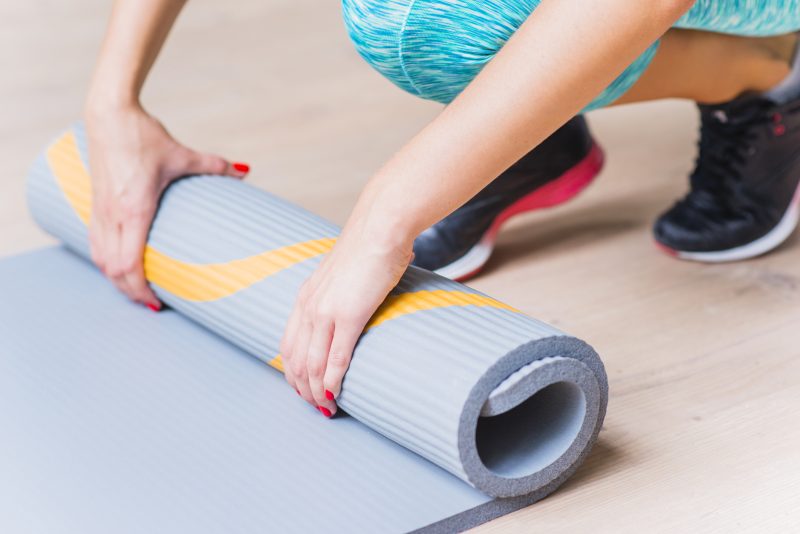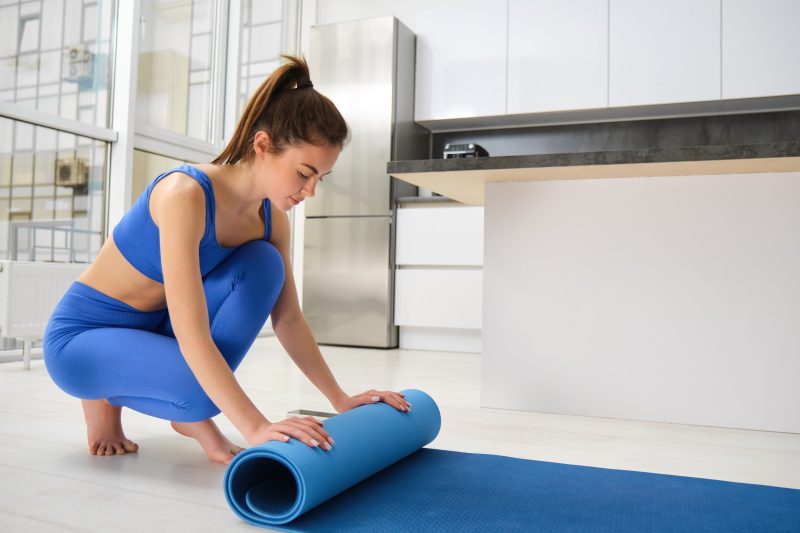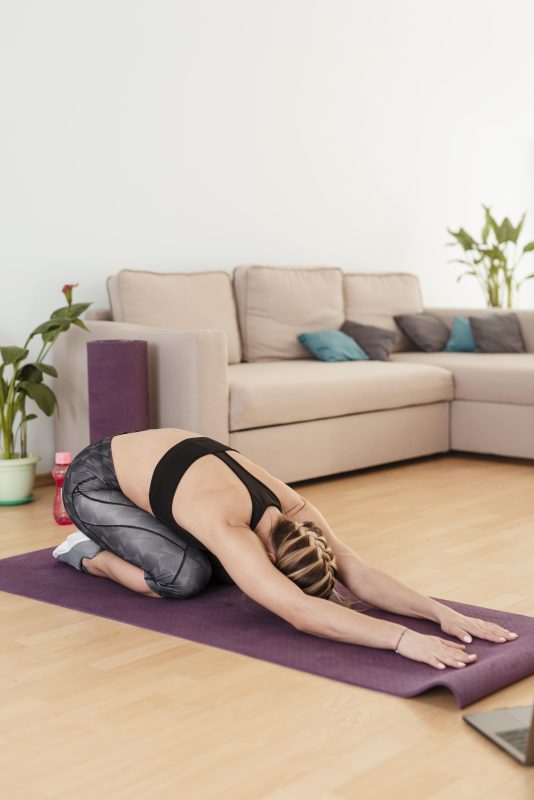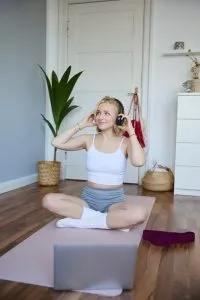When it comes to yoga practice, your mat is more than just a cushy surface—it’s the foundation of every pose, transition, and moment of stillness.
But have you ever considered how your yoga mat thickness affects your balance and stability in yoga?
Choosing the right mat can significantly impact your practice, whether you’re flowing through Vinyasa sequences or sinking into a long-held Yin pose.

Thick vs. Thin Yoga Mat – What’s the Difference?
Yoga mats come in a range of thicknesses, from ultra-thin travel mats to plush, joint-friendly options. But which is best for you?
- Thin Yoga Mats (1/16″ – 1/8″) – These mats (around 2mm-3mm thick) offer a firm connection to the floor, making them ideal for stability-focused practices. If you enjoy dynamic styles like Vinyasa or Ashtanga, a thinner mat can help you feel more grounded in standing and balancing poses. Plus, they’re lightweight and easy to carry.
- Standard Yoga Mats (1/4″) – Sitting at around 6mm, these mats strike a balance between comfort and stability. They provide enough cushioning for joint support without making you feel like you’re sinking into the floor. If you like variety in your practice, this is a great all-rounder.
- Thick Yoga Mats (3/8″ and above) – For those with sensitive knees or joints, a thick mat can feel like a dream. These mats provide excellent cushioning but may compromise stability in standing poses. They’re great for restorative, Yin, and meditation practices where floor work is the focus.

Best Yoga Mat for Stability – Finding the Right Fit
If stability is your priority, consider the following:
- Material Matters: Natural rubber or dense PVC mats tend to offer better grip and durability. A thin, dense mat is often more stable than a thick, squishy one.
- Surface Texture: A non-slip surface can prevent sliding, especially if you tend to sweat during practice.
- Your Practice Style: If you frequently practice balance poses like Tree Pose or Warrior III, a thinner mat will give you the firm foundation you need.
- Joint Health Considerations: If you have knee pain or sensitive wrists, opt for a medium-thickness mat (around 4-6mm) that offers enough support without compromising balance.

Tips from a Yoga Instructor
Bianca Leiber, a certified yoga instructor, advises:
“If you’re struggling with balance and stability in yoga, try practicing on a hard surface before committing to a mat.
This will help you understand how much cushioning you actually need.
Also, if you use a thick mat, consider stepping off onto the bare floor when working on standing balances—it can make a world of difference!”

Final Thoughts – Choosing Your Perfect Mat
Ultimately, the best yoga mat thickness depends on your individual needs.
If you prioritize balance and stability in yoga, go for a thinner, denser mat.
If joint comfort is more important, a thicker mat may be the way to go.
And if you’re somewhere in between, a standard 4-6mm mat offers a great compromise.

For more tips on choosing a yoga mat, check out these resources:
- Guide to Choosing Sustainable Yoga Mats
- Top Yoga Mats for 2025 – Comparisons and Buying Guide
- Verywell Fit offers a detailed guide on selecting the right yoga mat, taking into account various practices and individual needs.
Happy practicing—and may your mat always support you in finding balance, both on and off the mat!
Frequently Asked Questions – Yoga Mat Thickness and Its Effects on Balance and Stability
1. How does yoga mat thickness influence balance and stability during practice?
Yoga mat thickness plays a crucial role in your practice. Thinner mats (approximately 2–3mm) offer a firmer connection to the floor, enhancing stability in standing and balance-focused poses. In contrast, thicker mats (6mm and above) provide more cushioning, which can be beneficial for joint support but may compromise balance due to the softer surface.
2. What thickness is recommended for beginners focusing on balance?
Beginners aiming to improve balance might benefit from standard mats around 4–5mm thick. These mats offer a balance between cushioning and stability, providing comfort without significantly compromising balance.
3. Are thicker mats better for joint support?
Yes, thicker mats (6mm and above) are advantageous for individuals with sensitive joints, as they offer additional cushioning. However, it’s essential to note that while they provide comfort, they might reduce stability in certain poses.
4. Can mat thickness affect my performance in balance poses like Tree Pose or Warrior III?
Absolutely. Thicker mats can make it more challenging to maintain balance in poses that require a strong connection to the ground. Thinner mats allow for better floor feedback, aiding in balance and stability during such poses.
5. Is there a one-size-fits-all thickness for yoga mats?
No, the ideal mat thickness varies based on individual needs, practice style, and personal preferences. It’s essential to consider factors like joint sensitivity, the type of yoga practiced, and the importance of portability when selecting a mat.





